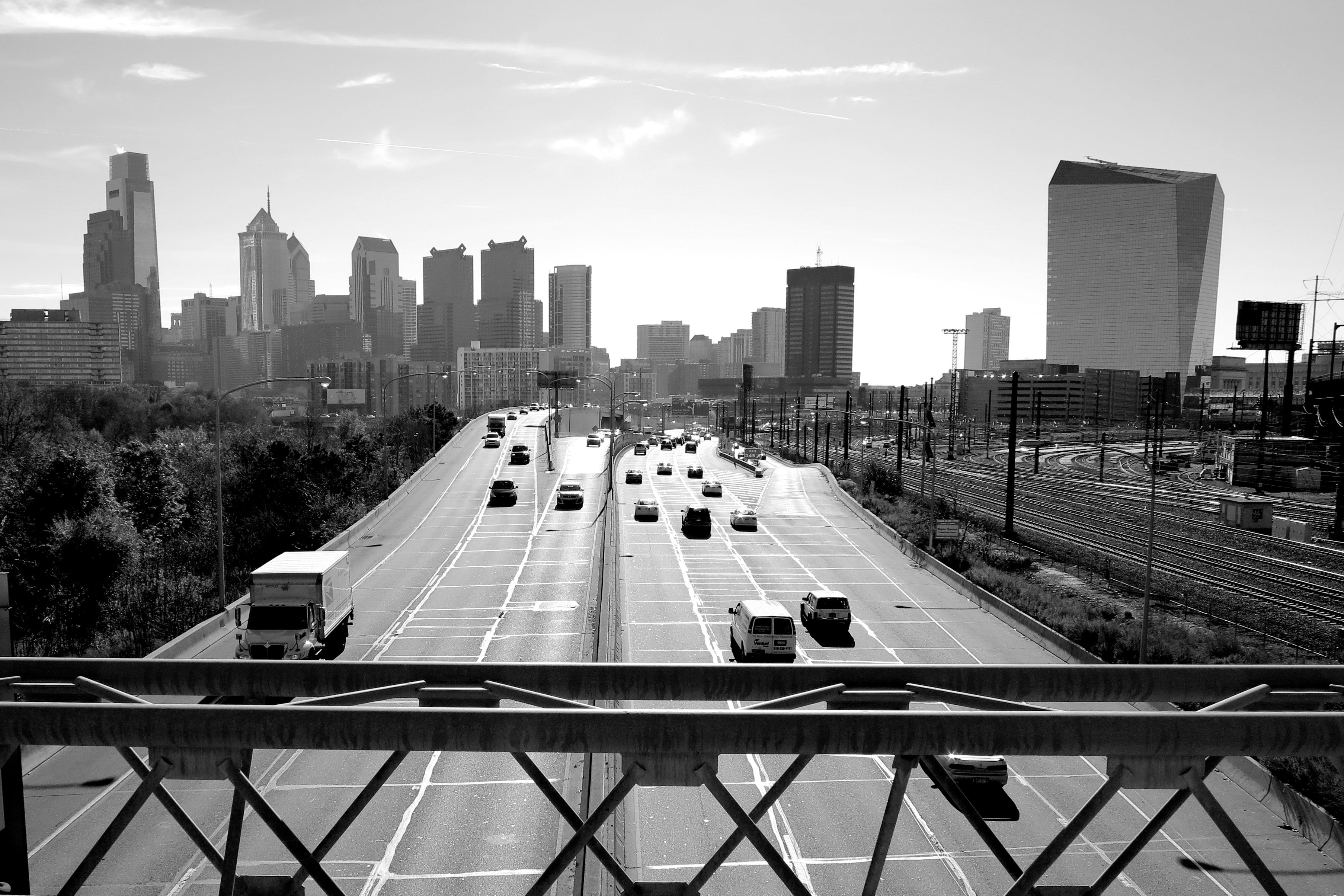Study shows Philly suffers from two of America’s worst highway bottlenecks

You don’t have to be John Butterworth to know that the Schuylkill Expressway between City Avenue and Roosevelt Boulevard will be jam packed, or that traffic will be bumper to bumper on I-676 approaching the I-76 interchange.
But a new report from the American Highway Users Alliance confirms your darkest suspicions: these are some of the worst bottlenecks in America.
They are, in fact, number 36 (I-76 near US-1) and 47 (I-676 approaching I-76).
According to the report, traffic on the ironically-named Schuylkill Expressway between City Avenue and Roosevelt Boulevard has an average queue length of 0.8 miles, wasting regional drivers 700,000 hours in annual delays and burning an extra 263,120 gallons of fuel per year. On 676, delays piled up for 0.3 miles on average, resulting in 300,000 hours and 112,580 gallons of fuel lost per year.
But before you go crowing to your out-of-state friends about how justified your moaning about Philly traffic is, let’s take a quick look at the rest of the report, which looked at the top 50 bottlenecks across the U.S.
Bottlenecks Nos. 2 – 7 are all in the Los Angeles area. ranging between 6.9 and 3.8 mile queues. In Chicago, I-90 apparently backs up an average of twelve miles. In addition to Chicago and LA, the report singles out New York, Austin, San Francisco, Boston, Seattle, Miami, Houston, Atlanta, Washington, DC, and Dallas for analysis. Philadelphia is merely another “notable area” along with Denver, Norfolk and Tampa.
The report prescribes various corrections to these bottlenecks, mainly in the form of adding lanes or building new highways. But that’s a policy response researchers have increasingly called into question, because traffic, like water, flows to fill whatever shape you provide it. Highway expansions induce demand: Adding lanes and building new roads encourages more driving. A large highway, like a large bucket collecting dripping water, will slowly fill up until it cannot hold any more.
Where we build transportation infrastructure in large part determines where we live. Wide, multilane highways encourage people to live further from work (cheaper land and better schools tend to help). So, too, did the Pennsylvania Railroad, which created the Main Line; railroad executives who would walk to the station and commute to work on coal powered locomotives built the first mansions in Bryn Mawr and Haverford.
To really reduce traffic, we need to reduce the gap between where people live and where they work (or go to school: its no coincidence that Lancaster Avenue gets particularly choked around Villanova University, or that City Avenue traffic eases up when St. Joe’s is on break). That more people walking to work reduces traffic makes obvious intuitive sense, but this works even if people just drive shorter distances – they are on the road less, meaning they contribute to traffic less.
Perhaps the best way of reducing the gap to work is by providing good transit options to work locations. For transit ridership, destination density matters more than where you live: it’s job location—not home location—that determines how you commute to work.
In Philadelphia, lots of our jobs are located in the suburban periphery, with lots in office parks. For those jobs, most people have no other real choice but to drive. Sure, you can take the train to Conshohocken and walk to most of the offices there, but that’s just not an option in Phoenixville or West Chester.
Even in the suburbs that have developed downtowns surrounding their regional rail stations, the developments tend to be residential and commercial – starter apartments, delightful shops, nice restaurants – not offices or other job centers.
More than transportation infrastructure issues, Philadelphia’s spread out employment is a product of our tax policies. The wage tax encourages businesses to locate outside of Philadelphia, rather than cluster in our downtown cores, the way they do in New York and Boston.
Still, providing more transit access to job centers, like the burgeoning Navy Yard, should mean fewer cars on the road. More importantly, it would encourage workers to buy homes and rent apartments near subway stops, instead of in the suburbs. Already, younger workers, compared to previous generations, view car ownership differently. Commutes are stressful – more stressful than work, according to research by Ford, the car company. Other research shows that drivers have the most stressful commutes, thanks to unexpected traffic delays.
Younger folks grew up in these terrible traffic patterns, hearing “I-95 slow from Academy through Girard” since they were born. And while they may decide to drive less than their older siblings and parents, they’ll still drive, especially if infrastructure is built to encourage driving. Where regional investments are made in the transportation network – where capacity is grown – will largely drive where future Philadelphians live, work and play—and how they will get there.
WHYY is your source for fact-based, in-depth journalism and information. As a nonprofit organization, we rely on financial support from readers like you. Please give today.






